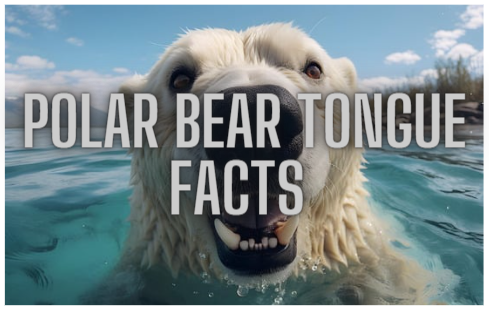Polar bears, the majestic apex predators of the Arctic, possess a wide array of adaptations that enable them to thrive in their frigid habitat. Among their lesser-known features is their remarkable tongue. In this article, we will explore the fascinating characteristics and functions of the polar bear’s tongue, shedding light on its role in their daily lives.
Anatomy and Structure
The tongue of a polar bear is a versatile organ designed to assist with various tasks. It is muscular, flexible, and covered with papillae, which are small, backward-facing projections. These papillae give the tongue a rough texture, aiding in gripping and manipulating objects. The papillae also assist in keeping the bear’s prey from slipping off their tongue while feeding.
Feeding Adaptations
The unique characteristics of the polar bear’s tongue play a crucial role in their feeding adaptations:
Grooming: Polar bears have a dense, insulating fur coat, and their tongue helps them maintain its cleanliness. They use their tongue to groom their fur, similar to the way cats groom themselves. The rough texture of the tongue helps remove dirt, ice, and other debris that may accumulate on their fur.
Drinking: Polar bears rely on their tongue to lap up water from puddles, meltwater pools, or holes in the ice. The flexible nature of their tongue allows them to extend it into narrow openings to access the water.
Obtaining Nutrients: When feeding on seals or other prey, polar bears use their tongue to strip the blubber and flesh from the bones. The rough texture of the tongue aids in detaching small pieces of meat from the carcass, enabling efficient consumption.
Sensory Perception: The tongue of a polar bear contains taste buds, although the extent of their taste perception is not well understood. It is believed that these taste buds help the bear differentiate between different types of food and may play a role in locating prey.
Social Interactions
The tongue of a polar bear also contributes to their social interactions and communication:
Scent Sampling: Polar bears have an acute sense of smell, and their tongue allows them to sample scents in the environment. By licking objects or the air, they can gather information about potential mates, rivals, or food sources. This behavior helps polar bears assess their surroundings and make informed decisions.
Affiliative Behaviors: Mother polar bears use their tongues to groom and clean their cubs. This grooming behavior not only helps keep the cubs clean but also strengthens the bond between mother and offspring.
Final Thoughts
Although often overlooked, the tongue of a polar bear is a remarkable and versatile tool that contributes to their survival in the Arctic. Its muscular and flexible structure enables a range of functions, including grooming, drinking, obtaining nutrients, and participating in social interactions. By understanding and appreciating the adaptations and unique features of the polar bear’s tongue, we gain further insight into the intricate and fascinating lives of these magnificent Arctic creatures.

